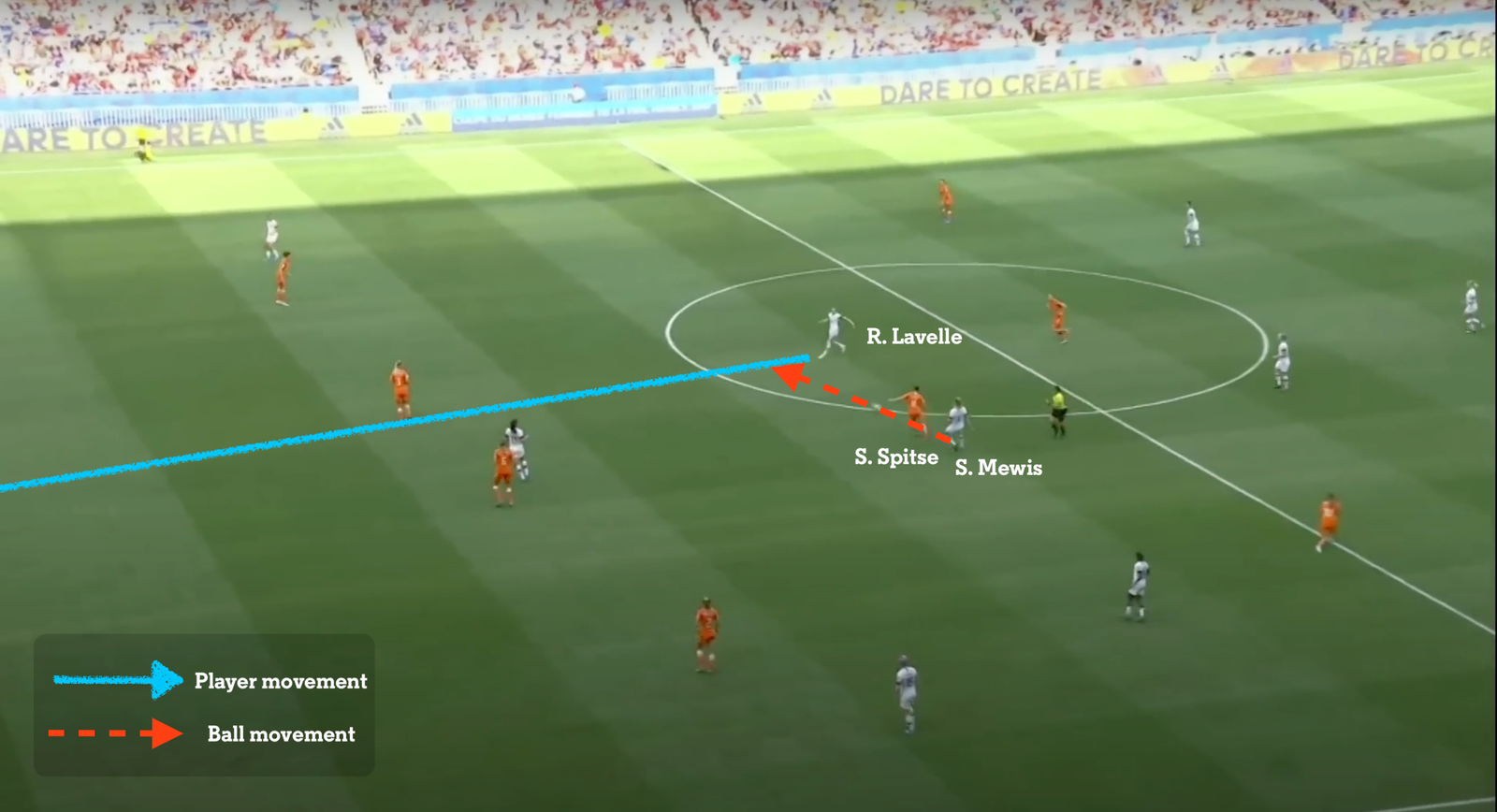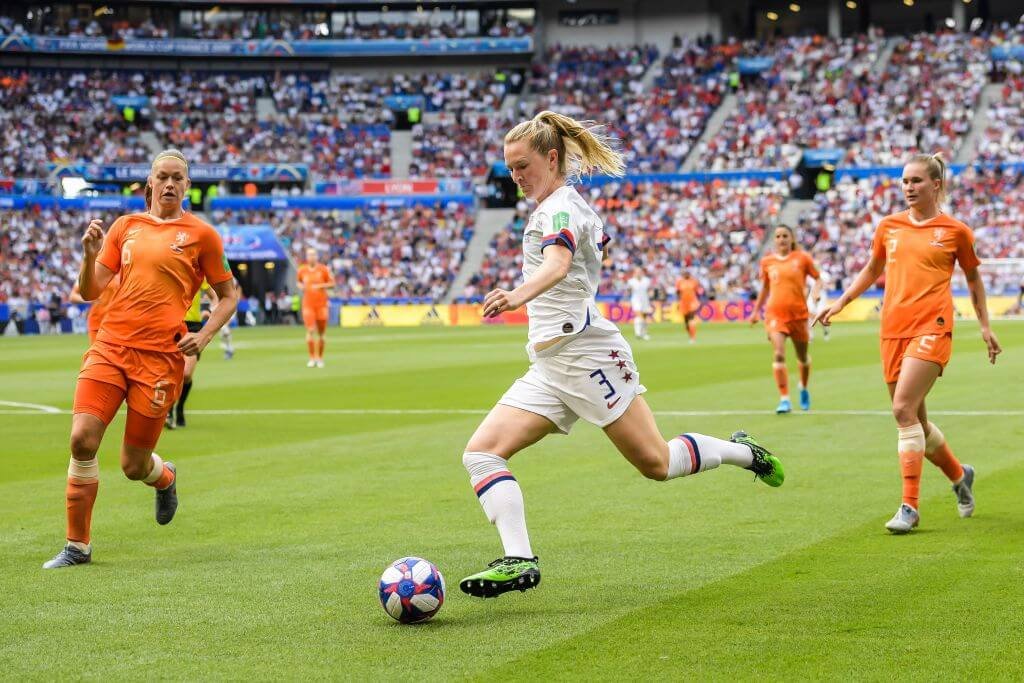So often when we think of an era’s greatest players, we’re fixated on the spectacle of their game. Ada Hegerberg’s other-worldly reading of space, Sam Kerr’s unconsciously clinical finishing, Marta’s mazing weaves up the field, Wendie Renard’s unparalleled aerial prowess, Katie McCabe’s tenacity across every blade of grass. The panache with which these artists carry themselves also shapes legacies, from Megan Rapinoe’s transcendent 2019 World Cup to Linda Caicedo’s goal against Germany last summer, which was her statement of arrival on the world’s stage.
As a result, true two-way midfielders don’t always get the plaudits their play deserves. Their position on the field — that is, in the part of the pitch without a goalmouth in proximity — can keep them out of year-end highlight reels, while the thankless tasks they execute to progress the ball in their favor or stifle opponents the other way at times look more procedural than anything else. Compared to goal-obsessed strikers, tireless wingers and wing backs, chance-creating playmakers and towering center backs, the hard yards between the boxes are the moments that viewers feel free to run to their fridge or check their phones before the next “big” happening near goal.
So while Rapinoe’s clutch penalties, crosses and The Pose helped her win the Golden Ball in 2019 while Lucy Bronze and Rose Lavelle’s work in the final third landed them Silver and Bronze, there’s a very viable case that none were the best player at that World Cup.
Further afield from the tea-time celebrations was Sam Mewis, a do-everything midfielder who put in a nearly faultless 467 minutes as the United States left France with its fourth Women’s World Cup title. She didn’t make the “Players who Dared to Shine,” FIFA’s needlessly garish term for that event’s 10 best players that took the place of most tournaments’ best XI. That wasn’t for a lack of statline contributions: her two goals were as many as Eugénie Le Sommer, Marta, Sofia Jakobsson or Lieke Martens tallied, for example.
Nevertheless, anybody who watched the U.S. that summer was inevitably wowed by Mewis’ midfield work. The number of things she did at a world-class level made it impossible for viewers not to notice.
Simply, she was at the heart of nearly every good thing that the U.S. did. Mewis started in five of their seven games, being rotated out for the second group-stage match against Chile and coming off the bench in the semifinal as Jill Ellis opted to start Lindsey Horan (talk about champagne selection issues).
In that famous (or infamous, depending who you ask) 13-0 drubbing of Thailand in the opener, Mewis had two goals and two assists. She later assisted Horan on the opener in a gut-check group-stage win against Sweden. Then came the final, where a Rapinoe penalty opened the scoring before an incisive run from midfield by Lavelle led to the tournament’s iconic goal that finished off the USWNT’s quest for a repeat.
The highlights seldom show it, but Lavelle’s goal was not unassisted. It started with a pass from Mewis, who collected the ball just inside the U.S.’s attacking half after a tackle by Crystal Dunn.

At this stage, we’re a mere seven minutes removed from Rapinoe’s penalty kick. The Dutch know they need to equalize in a hurry and have committed more players to the attack, leaving Sherida Spitse as the only defensive midfielder while Jackie Groenen took a more advanced role.

Mewis’ first touch is one to redirect the ball’s lateral progress and redirect its roll in the U.S.’s favor. Lavelle has already noticed the colossal plot of AirFibr hybrid grass made available by the Netherlands’ change in approach and is charging into it. With Spitse’s determined sprint to get the ball, her body position leaves her able to simultaneously close the angle on Mewis while being well-oriented to follow any possible pass and obstruct Lavelle’s run into the final third.
Mewis needs to ensure this golden opportunity doesn’t escape, so she does something that separates the truly great midfielders from their incredibly talented peers. Rather than reacting to the game she’s playing in, she takes control over it.

Even with a potentially glorious ball available to her, she eliminates one of the sequence’s final remaining obstacles. It’s a simple touch with the outside of her right boot to kill the ball’s momentum a bit, which accomplishes two things. First, she’s able to better control the weight of a pass into Lavelle’s path. Second, and more critically (since, let’s be honest, Mewis probably would’ve gotten the weight of the pass right on the fly): she’s forced Spitse to stop in her tracks in hopes of winning the ball further up the pitch to spring a Dutch fast break.
It’s nice to want things, but that won’t jive with Mewis’ plans. Now that Spitse has fully committed to the ball, the time is right to reward Lavelle’s run.

With just two seconds of possession, Mewis is able to take the final defensive midfielder off of Lavelle’s radar. Whether or not Spitse would have been able to leg back and impede Lavelle’s progress isn’t the point — it’s the fact that she no longer could attempt to do so.
You may not have realized it, but you’ve likely had a favorite Sam Mewis highlight for over four years. Here’s the rest of the sequence, since it’s always a delight to take in if you’re a USWNT fan.
“But lo,” I hear some of you thinking as you read this. “Mewis had a great World Cup, but that tournament is notorious for eliciting overreactions to small sample sizes of soccer that’s more emotional than almost any other game. It’s easy for a midfielder to play that well when they’re on an all-time great team at the apex of its authority over the competition. Surely, she’d look more like her peers across a full club season.”
But lo, I retort while wondering if your internal narrative is always so Shakespearean. After five NWSL seasons in which she won four regular season titles and three NWSL Championships, Mewis moved to Manchester City on August 10, 2020. She spent just one season in the Women’s Super League, as City finished second in the table behind Emma Hayes’ Chelsea. She made 32 appearances in all competitions, scoring 16 goals. Among those strikes were the game-winner in the FA Cup semifinal against Arsenal and in extra-time of their 3-1 triumph over Everton in the final.
It was the one chance to assess Mewis away from her nation’s domestic league — and, on the whole, it reinforced what many stateside had believed: she was one of the best midfielders in the world, if not one of the game’s very best players of any role.

Using the exact same statistics as above, the only that saw any notable regression from her World Cup performance was in terms of clearances, which speaks to the role she played for City as well as her team’s status as a league heavyweight. Still, her ball progression, ability to get on the ball in the mixer and her shooting volume were all at the top of the pops in the FA WSL. A full season of work still proved her to be elite in all the same ways that stood out in the summer of 2019, deservedly earning a place on the league’s team of the year.
Of course, her time in England was brief. Mewis returned to the North Carolina Courage in May of 2021, making five appearances in the league before joining her national team in the Tokyo Olympics. She never fully recovered from the associated arthroscopic procedure, playing just 90 minutes for the KC Current in the 2022 NWSL Challenge Cup and 45 minutes in a single international friendly that year.
Unfortunately, Mewis’ career is now being revisited in light of its abrupt end. However, the years immediately before that knee injury saw her playing at a level that every player in the world envies but few ever achieve. She wasn’t the most famous player on her national team, an understandable plight as part of one of the sport’s greatest juggernauts.
Nevertheless, for at least two years, Sam Mewis was arguably the best player in the world at any position. Although we’re all left wishing we could have watched her play for longer, her legacy in the game is unquestionable.
(Photo: VI Images via Getty Images)
Read the full article here


